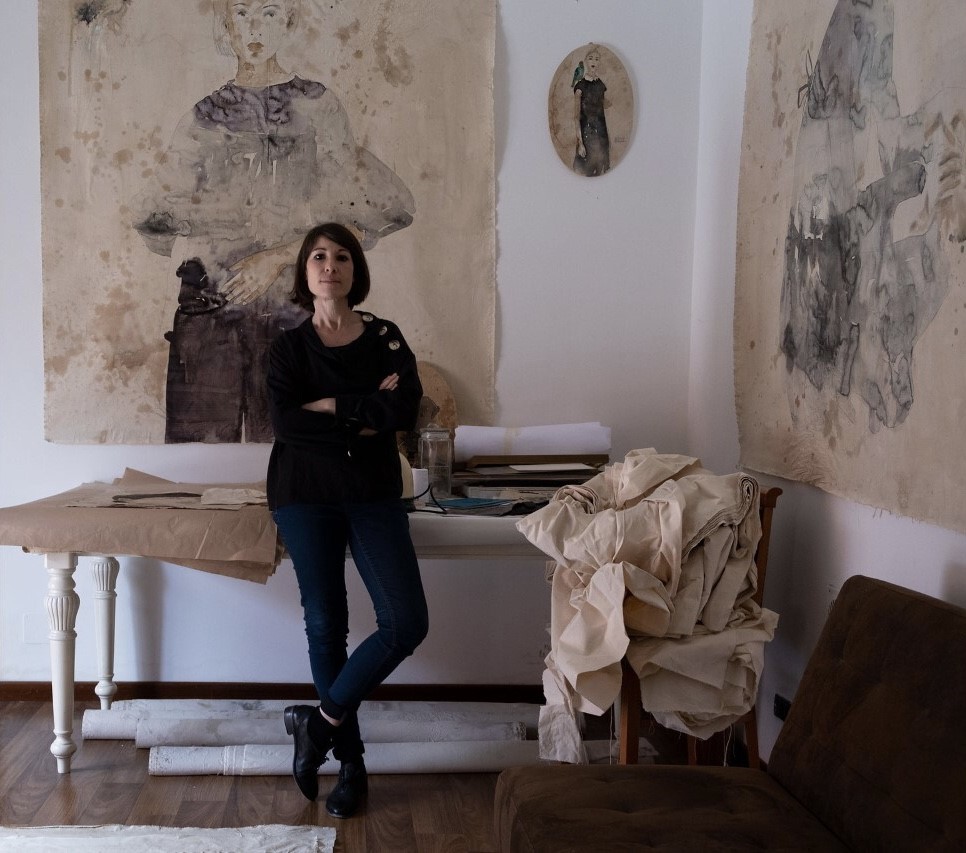
Valeria Patrizi Nasce nel 1979 a Roma dove oggi vive e lavora.
Nel 1999 si specializza in decorazione pittorica presso l’Istituto d’Arte “I.S.A. Roma2”, nel 2004, dopo aver frequentato per un anno la “Facultad de Bellas Artes de Granada” in Spagna, si laurea in pittura all’Accademia delle Belle Arti di Roma.
Diplomata in Restauro pittorico presso la Scuola di Restauro San Giacomo del Comune di Roma inizia il suo percorso artistico studiando le tecniche pittoriche e la forma attraverso il disegno e lo studio dell’anatomia. Dopo un lungo periodo di studio della pittura accademica se ne distacca indirizzandosi verso una nuova dimensione pittorica più essenziale e originale; nelle sue grandi tele, esposte senza telai come fossero grandi arazzi, utilizza caffè, thè e bitume cercando l’equilibrio della forma attraverso linee e macchie. In costante ricerca di una nuova e simbolica idea della figura umana si sofferma sull’immagine della donna; la sola in cui può perdersi e ritrovarsi. Ha all’attivo importanti mostre collettive e personali presso gallerie private e spazi istituzionali come il Museo Diocesano di Caltagirone, Palazzo Del Pegaso, sede del Consiglio della Regione Toscana, La Pelanda, Museo Macro Testaccio di Roma.
Partecipa da molti anni a Fiere d’Arte Contemporanea in Italia e all’estero.
Born in 1979 in Rome where she lives and work.In 1999 she achieved her specialization in pictorial decoration at the Art Institute “I.S.A. Roma2” and in 2004 she graduated at the School of Art in Rome (under Nunzio Solendo – Chair of Painting) after attending for 6 months the “Facultad de Bellas Artes” in Granada – Spain.With a degree in painting restoration attained at the San Giacomo Restoring School in Rome she started her artistic career studying the pictorial techniques and form through drawing and the study of anatomy.After studying for a long period the academic painting she distances herself from it to move towards a new pictorial dimension that is more essential and original. In her canvases that are often displayed without any frame as if they were tapestries she uses coffee, tea and bitumen looking for the balance of the form through lines and stains. In the constant research of a new and symbolic idea of the human figure she lingers on the image of the woman. Only in her she can lose and find herself.